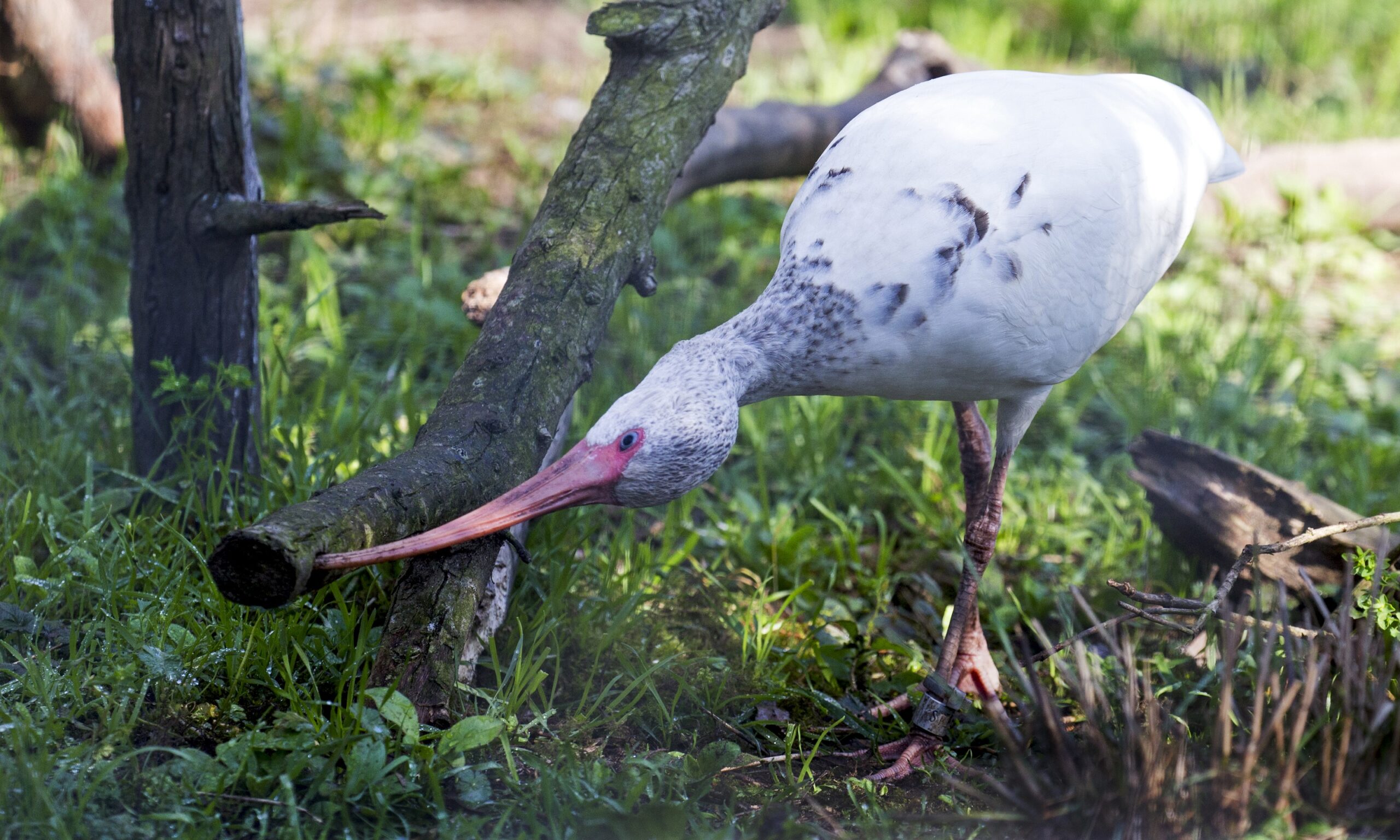White ibis
Eudocimus albus

At the Zoo
The white ibis can be found in the free-flighted South American Tropical Rainforest and Aviary.
Fascinating Facts
- This species is very closely related to the scarlet ibis. In Venezuela, where their ranges overlap, the white ibis often hybridizes with the scarlet ibis, giving various shades of pink and scarlet in young birds’ plumage.
- Their nostrils are at the base of the bill, so they can breathe while submerging their bill in the water or mud.
- Their beaks are sensitive to movement and can detect prey through mud and water.
- Ibis’ sweep their long bill back and forth across the bottom of a body of water to pick out suitable food items, cleaning prey in the water before swallowing anything.
Physical Characteristics
The white ibis is covered in white plumage with scarlet legs, facial skin, and bill. Their black wing tips are usually only visible in flight. As juveniles, they are dark and mostly grey, molting into white adult plumage by early in their second year. During the breeding season, their legs, face, and beaks turn from pale orange to bright pink.
Habitat/Diet
White ibis are found in the southeastern United States south to northern Colombia, Ecuador and Venezuela. They live in shallow coastal marshes, wetlands, and mangrove swamps with salt, brackish, or fresh water. They are diurnal and carnivorous, feeding on small aquatic prey such as insects, crayfish, frogs, and small fishes.
Social Behavior
White ibis have a harsh and nasal “hunk-hunk-hunk-hunk” alarm call uttered by the male, while females simply squeal. They often utter a soft grunting “croo-croo-croo” while foraging. White ibis are highly gregarious, living in flocks and nesting in huge colonies near water that can number up to the tens of thousands. They will defend their small nesting territory and show some aggression while mating, jabbing at rivals, or catching an opponent’s wing or head in their bill.
Status In The Wild
White ibis are listed as Least Concern by IUCN. White ibis populations are large and do not appear to be decreasing, but they are being monitored to ensure the major threats of habitat loss and destruction of colony sites do not have too large an impact. Nesting adults are particularly sensitive to disturbance, and eggs and chicks left alone due to human intrusion are susceptible to predation. Since this species nests in large groups, nest disturbance could have devastating effects on a colony.
